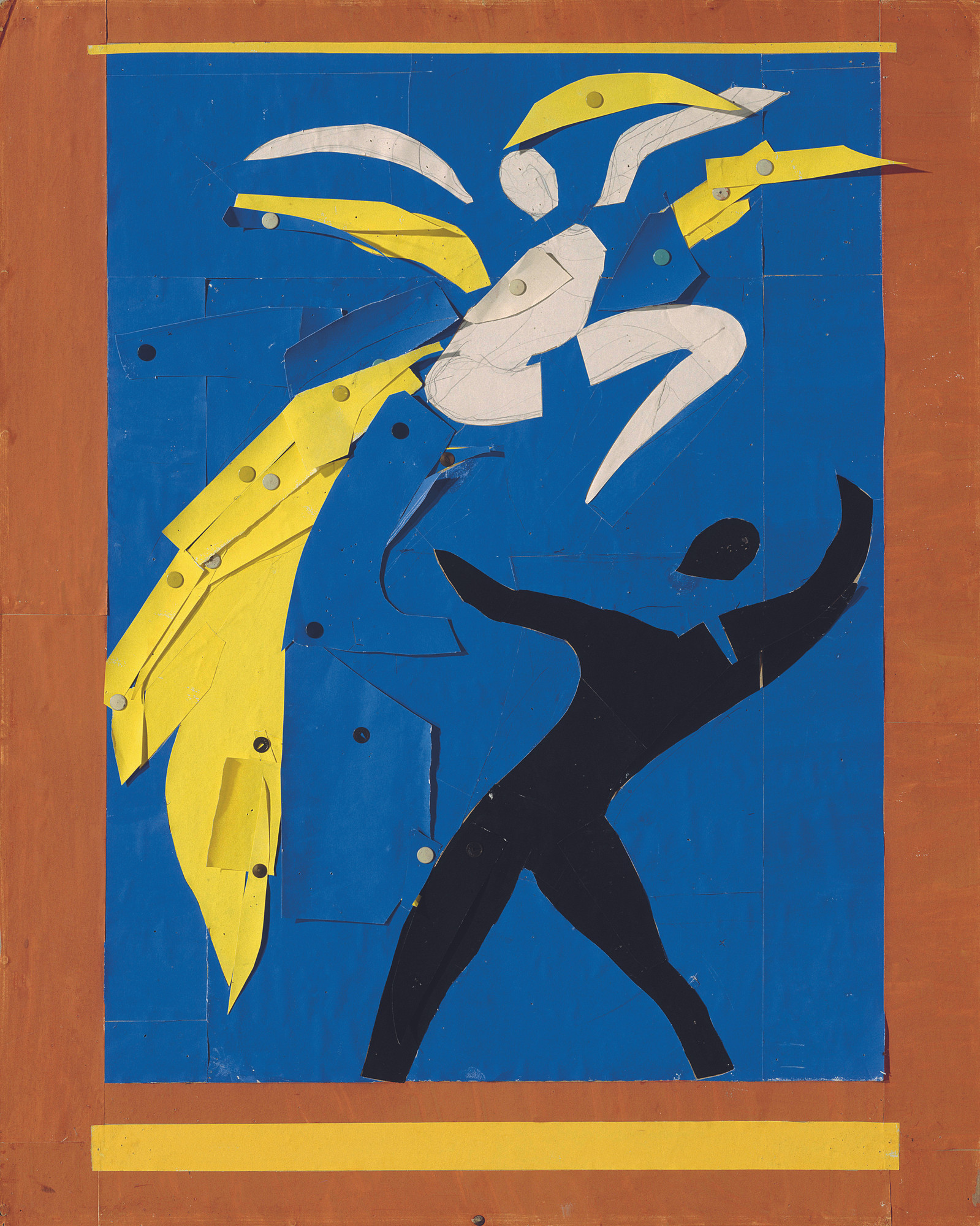GLENN LOWRY: This work, Two Dancers, is one of Matisse’s earliest experiments with cut paper. Curator Samantha Friedman:
SAMANTHA FRIEDMAN: Early in the cut-out practice, Matisse was using cut paper…to design book covers, designs for the ballet without really understanding yet that this was going to be a new medium… so it was really a means to an end or an expedient.
GLENN LOWRY: Two Dancers is a study for the curtain of a ballet called Rouge et Noir, which premiered in 1939. Take a moment to examine the way Matisse constructed the figure leaping in mid-air.
SAMANTHA FRIEDMAN: What we see … is this incredible texture and depth.The work is not at all flat, but … we see little bits of different pieces of paper that Matisse has built up…. What's so fantastic about this work, as well, is that it still has the thumbtacks in it. So with many of the cut-outs that you'll see throughout the exhibition, the works have been …glued… to their supports. But as Matisse was creating all of these works, he was using thumbtacks or pins. … this evidence of his process really helps us to understand what all of these works might have looked like when he was working on them.
